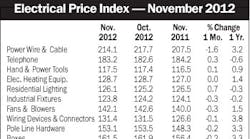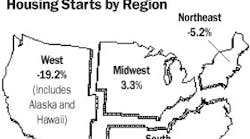After the dot-com bust, Silicon Valley distributors and reps are enjoying a solid resurgence in the market’s economic fortunes. While no longer being driven by the chip manufacturing of the dot-com years, Silicon Valley’s economy is being fueled by a variety of industries, including clean technology, biotechnology and solar power. Companies are at least talking about, if not acting on, “being green.”
“I believe we are mid-way through a rebound period, although vastly different from previous recoveries,” says Gary Lessing, president of Ewing-Foley Inc., a Cupertino, Calif.-based manufacturers’ rep. “The biggest difference from our perspective is that the major Silicon Valley companies are once again experiencing significant growth in sales and profits, but the manufacturing jobs have not materialized with this recovery because of offshore outsourcing. The job growth continues to be in the technical, marketing, sales and IT support areas.”
One sure sign of Silicon Valley’s current growth is the number of companies buying up big tracts of real estate for their corporate campuses. In the last year, Google, Yahoo and Apple invested a combined total of more than $400 million in large blocks of land or buildings where they hope to erect future campuses, according to an article that appeared in the June 27 issue of The New York Times.
“The larger companies continue to expand their facilities at a significant pace,” says Lessing. “Companies like Apple, Cisco and Google are putting tremendous pressure on available buildings within their respective locales. For instance, the office-vacancy rate in Cupertino (home to Apple) is less then 3 percent, due largely to their hellacious appetite for space. Google is doing the same thing in the Mountain View sub-market (5 percent vacancy rate). Cisco also continues to expand in the Valley. These companies, as well as the smaller ones that support them, have made the commercial real estate market robust once again. This has certainly kept the T-1 market and the IT infrastructure markets quite robust. Also, the data center activity, both public and private, is quite robust and we are well-positioned to capitalize on these opportunities.”
Burt Schraga, president and CEO of Bell Electrical Supply, Santa Clara, is also seeing the growth in Silicon Valley from companies like Google and Apple, and the exodus of major manufacturers. He defines the electrical wholesaling business in three market segments — electrical contractors, OEMs and MROs. He says the maintenance business has pretty much dried up over the last 15 years, because the large electronics plants subcontract out their facility business. “Twenty years ago, Hewlett-Packard did about $3 million with us in their facilities department,” he says. “I doubt they will do $100,000 with us this year, because they have moved a lot of manufacturing out of Silicon Valley and then they have subcontracted the rest of it out.”
Other customers have left Silicon Valley, too, he says. Five years ago, Bell Electrical Supply’s largest customer moved from Freemont, Calif., to Tijuana. The distributor was able to maintain the business in Tijuana, but that company eventually moved all its manufacturing to Asia. Schraga says the only business that seems to be remaining in the area is the more complicated manufacturing that requires changes on control panels.
Electrical construction is still pretty strong despite a slowdown in the tract-home segment of the residential market, Schraga says. “There is a lot of remodeling still going on with homes, and high-end homes seem to be doing well,” he says. The average price of a home in San Jose is more than $700,000. If you get into the high-end homes, they’re selling for $1,000 to $2,000 a square foot.”
Lessing of Ewing-Foley says the area’s housing market is going through a unique cycle. “Overall, year-over-year sales volumes are lower in terms of units, but the median sale prices have actually risen in most moderately priced sub markets,” he says. “Certain premium areas have actually experienced little slow-down, mostly due to limited inventory and a plentiful supply of new millionaires being spawned by the likes of Google, Apple and many other smaller companies that have benefited from the increased volume of merger and acquisition activity in the area.”
According to the San Jose Business Journal, the Santa Clara median price home in April 2007 was $868,410, up from $775,000 a year ago. Sales volume was down approximately 20 percent.
Although homebuiding is down, things are heating up in other segments of the construction market. In Silicon Valley alone, investments in “clean tech” soared from $34 million in the first quarter of 2006 to $290 million in the third quarter, according to Joint Venture: Silicon Valley Network, an industry-government coalition that promotes innovation. There’s also action in the multi-family and speculative building markets. Four high-rise condominium towers are under construction in downtown San Jose, and several developers have started speculative office projects in Silicon Valley. The Jay Paul Co., a private real estate firm in San Francisco, recently started construction on one of the largest speculative office complexes in the valley since the dot-com bust. When complete, Moffett Towers in Sunnyvale will have seven eight-story office buildings, totaling 1.8 million square feet. The first phase, which consists of three of the buildings, will be ready in August 2008. The developer is talking with a number of major tenants in the marketplace and has received some letters of intent to occupy the building.
Herm Isenstein, president of DISC Corp., Orange, Conn., forecasts that electrical distributors in the San Jose metropolitan area will sell approximately $1.4 billion in electrical products this year, up about 5 percent from 2006.
Solar power is getting more press these days, and there’s quite a bit of talk about this technology in Silicon Valley. Lessing says he also has seen the semiconductor companies investing in photovoltaics in a big way. “Lots of work is being done here,” he says. “The Bay Area is receiving an unfair share of venture-capital dollars in this area. But manufacturing for these products has moved out of the local market, with several of the big names starting production in Asia, (such as) LAM and Applied Materials.”
Bob St. Clair, a lighting account manager for the GE Consumer and Industrial Division in Silicon Valley and other regions of Northern California, also sees growing interest in the green movement. St. Clair is seeing a lot of activity in retrofitting and especially re-retrofitting buildings, spurred in part by rebate programs. “There’s a pretty good level of retrofitting,” he says. “The low-hanging fruit has come and gone. But there is a certain amount of activity where people are re-retrofitting. In other words, those who did it 10 years ago with T-8s and electronic ballasts, now the technology with T-8s and electronic ballasts has progressed to the point where it is starting to make sense to do it all over again; to use more efficient electronic ballasts and still be able to commit a good payback period and return on investment.”
Local distributors including Bell Electrical Supply and W.W. Grainger have been involved in the relighting of Adobe Systems’ headquarters in San Jose, Calif. George Denise, Client Solutions Group of Cushman & Wakefield of California Inc., agent for Adobe Systems Inc., says the particular project they are working on now at Adobe is the changing out of all the lamps and ballasts on each floor, one floor a month, for all 41 floors of the company’s three towers.

